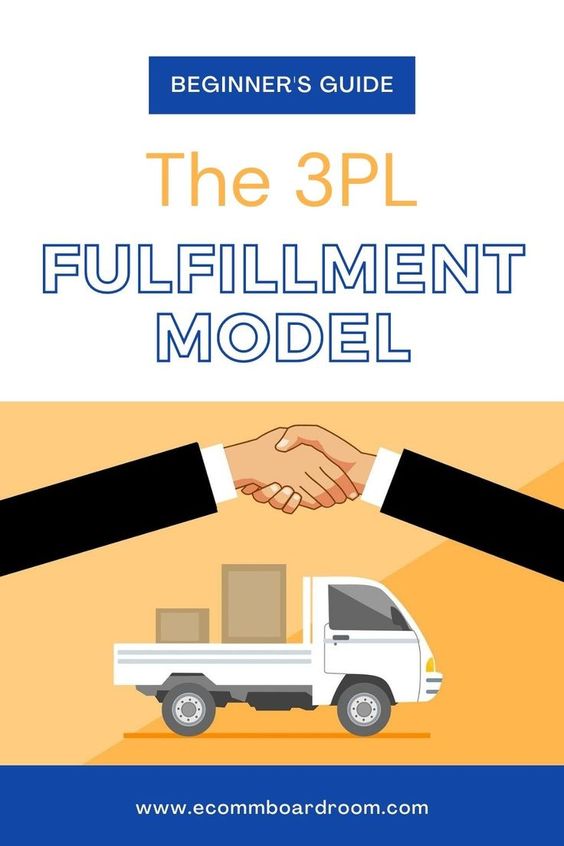Welcome! We spend a lot of time talking about fulfillment models on our site. That’s because in the world of eCommerce, each fulfillment model really defines a different overall business model. Today, we are going to introduce an underused option: the 3PL Fulfillment Model.
What is a 3PL Fulfillment Model?
With 3PL Fulfillment, you (the seller) imports or ships a product in bulk to the warehouse of a 3rd Party Logistics Company (3PL). Once a customer places an order through your online store, the 3PL delivers the product.
A third party logistics company is one that specializes in product distribution, warehousing, and fulfillment services. Logistics is such a burden for most businesses that an entire industry exists to solve this problem.
Editor’s Tip: Are you looking for a great 3PL? Get a leg up by checking out Rush Order 3PL fulfillment services.
How 3PL Fulfillment Works
Start by importing a product to the US in bulk, likely from Alibaba or a US based Wholesaler. Contract with a 3PL and ship the product to their warehouse. Once an order is placed through your online storefront, the 3PL delivers the product to the customer.
Note that you could sell your products on any number of eCommerce platforms under this business model. For example, you might have an Amazon Product Listing, a Shopify Store, and a WooCommerce store (on WordPress). You could sell the same product in all three places at the same time.
With the right technology, your stores will be seamlessly synced to your 3PL’s system and all orders will go out automatically. This is called a multi-channel approach and can be a powerful way to maximize sales.
Benefits of 3PL Fulfillment
There are many benefits of this fulfillment model. To name a few:
- Ability for a multi-channel sales approach (mentioned above)
- Many 3PLs offer 2-Day delivery
- Avoid paying hefty Amazon fees if you want to
- Greater control over the product quality
- More freedom to customize your product and its packaging
- Ability to keep your customer’s data
Of course, you will still have to pay your 3PL inventory storage fees and fulfillment fees, and bear the burden of marketing your store. But this is an interesting hybrid model that most eCommerce entrepreneurs are not taking advantage of. There is something to be said for the benefits listed above. I have personally used this model with success in 2020.
How 3PL Fulfillment Is Different
I thought it might be helpful to review how 3PL Fulfillment differs from some of the other more popular models that we discuss on this site.
How 3PL Differs from Dropshippng
Unlike Dropshipping, a 3PL fulfillment model requires the you to purchase product in bulk before a customer places an order. So, in general, a 3PL model requires a larger initial investment to get started (the purchasing of inventory).
However, the advantage is that 3PLs typically have much more favorable delivery windows (2-7 days as opposed to 2+ weeks for dropshipping). Additionally, with a 3PL model you are free to customize the product packaging and create a unique customer experience.
How 3PL Differs from Amazon FBA
This one is a bit of a trick question. The Amazon FBA model in truth is a type of 3PL Fulfillment Model! In the FBA case, Amazon wears many hats. They are your eCommerce Platform, Advertising Hub, and yes – your 3PL. Both models require a bulk purchase of inventory. But make no mistake: a standard 3PL model is different from FBA.
For one thing, the 3PL model doesn’t get to take advantage of Prime Shipping. Many 3PLs do offer delivery windows of 7 days or less, but there’s nothing like Amazon Prime. Missing out on that is definitely a disadvantage.
Also, and most notably, Amazon FBA requires a single-channel sales approach (Amazon.com is your only storefront). But 3PL Fulfillment offers the super valuable multi-channel approach mentioned previously.
ShipBob: Recommended 3PL for eCommerce
Many 3PL companies have large monthly minimums, making it prohibitive for eCommerce entrepreneurs that are just getting started.
However, some innovative companies have come along that are friendly to small businesses. One great example, which I use for my business is ShipBob. ShipBob is a 3PL with a modern technology stack and no monthly minimums. They can integrate directly with your Amazon, Shopify, WooCommerce (and more) stores and automatically fulfill your orders when a customer makes a purchase. Say hello to the multi-channel sales approach! ShipBob is definitely worth looking into.
Putting a 3PL Fulfillment Model Into Practice
That being said, my recommendation is to only implement a 3PL Fulfillment model after you have some eCommerce experience under your belt. Once you understand the mechanics of importing products and the basics of digital marketing, you will have more confidence to try a business model like 3PL.
Once you get to that point, I believe the best way to get started with 3PL Fulfillment is following this high-level process:
- Open a Shopify Store and begin by testing out your product ideas through Dropshipping.
- Continue dropshipping until the market has demonstrated consistent demand for the product over a period of 2-3 months.
- Place a relatively small bulk order with a Dropshipping supplier.
- Send it to a Shipbob Warehouse, and let the fun begin!
If you have any questions whatsoever about the 3PL Fulfillment model, please don’t hesitate to reach out. The best thing you can do is sign up through the form below to get additional resources, or reach out to us at:
info@ecommboardroom.com
Cheers.


